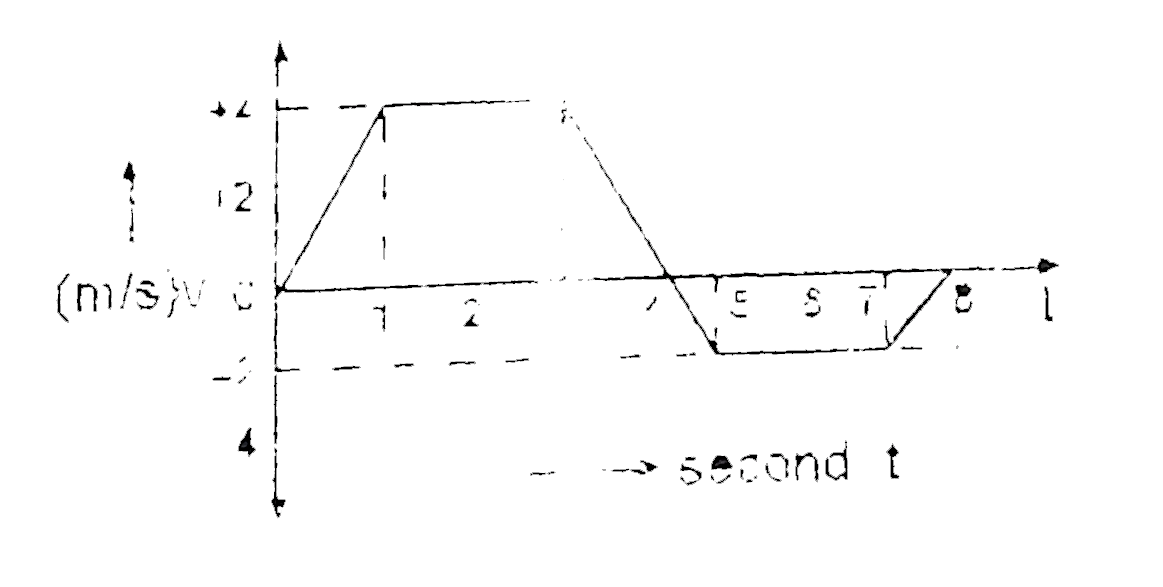Solve the following examples: (numerical problems)
A particle of mass 10^(-10) kg moves in a straight line. Figure shows how its speed changes with time. Answer the following questions based on it.

Find the momentum of the particle at t=1.85s.Solution in Marathi
Step by step video & image solution for Solve the following examples: (numerical problems) A particle of mass 10^(-10) kg moves in a straight line. Figure shows how its speed changes with time. Answer the following questions based on it. Find the momentum of the particle at t=1.85s. by Physics experts to help you in doubts & scoring excellent marks in Class 9 exams.
Updated on:21/07/2023Topper's Solved these Questions
- LAWS OF MOTIONBOOK - NAVNEET PUBLICATIONCHAPTER - LAWS OF MOTIONEXERCISE - EXERCISE
196 Videos
- CURRENT ELECTRICITYBOOK - NAVNEET PUBLICATIONCHAPTER - CURRENT ELECTRICITYEXERCISE - EXERCISE
215 Videos
- MEASUREMENT OF MATTERBOOK - NAVNEET PUBLICATIONCHAPTER - MEASUREMENT OF MATTEREXERCISE - EXAMPLES
1 Videos
Similar Questions
Complete the sentences and explain them:
The minimum distance between the start and finish points of the motion of an object is called the ........ of the object.
View SolutionFill in the blanks:
The coulomb is the SI unit of………….
View SolutionWhat is the Dalton's atomic theory?
View SolutionFigure shows the displacement-time graph of a particle moving in a straight line. Find the signs of velocity and acceleration of particle at time t = t_1 and t = t_2.
View SolutionThe velocity-time graph of a particle moving in a straight line is shown in figure. The mass of the particle is 2kg. Work done by all the forces acting on the particle in time interval between t=0 to t=10s is

View SolutionThe x-t graph of a particle moving along a straight line is shown in figure

The speed-time graph of the particle is correctly shown by
View SolutionThe velocity time graph of a particle moving along a straight line is shown in the figure. In the time interval from t=0 to t=8 second, answer the following three question.

The distance travelled by the particle is :
View Solution50 g द्रव्यमान का एक कण सरल रेखा के अनुदिश चल रहा है | समय के साथ इसकी चाल में परिवर्तन चित्र में दिखाया गया है | t = 2 s, 4 s तथा 6 s पर कण पर लग रहा बल ज्ञात करें |

View SolutionVelocity-time graph of a particle moving in a straight line is shown in the figure. Mass of the particle is 2 kg. Work done by all the forces acting on the particle in time interval t = 0 to t = 10 sec is
View SolutionVelocity - time graph of a particle moving in a straight line is as shown in figure. Mass of the particle is 2 kg. Work done by all the forces acting on the particle in time interval between t = to t = 10 is

View SolutionA particle of mass 10 kg is driven by a machine that delivers a constant power of 20 watts. If particle starts from rest and moves along a straight line, then force (in Newton) on particle at time t(t>0) is
View SolutionFigure shows the displacement-time graph of a particle moving in a straight line. Find the signs of velocity and acceleration of particle at time t=t1andt=t2.

View SolutionThe velocity-time graph of a particle moving in a straight line is shown in figure. The mass of the particle is 2kg . Work done by all the forces acting on the particle in time interval between t=0 to t=10s is
View SolutionThe x-t graph of a particle moving along a straight line is shown in figure The speed-time graph of the particle is correctly shown by
View SolutionForce-time graph of a particle of mass 6 kg is shown in figure, then change in linear momentum during t = 0 to t = 10 s is
View SolutionThe velocity-time graph of a particle moving in a straight line is shown in Fig. The mass of the particle is 2 kg. Work done by all the forces acting on the particle in time interval between t=0 to t=10 s is
View Solution
